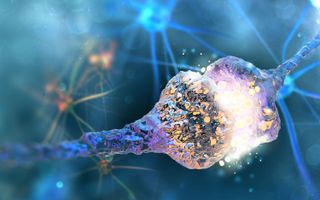Well, years ago Dr. Michael Tymianski of the Toronto Western Hospital Research Institute in Canada referenced 1000+ failed neuroprotective clinical trials. Of course I don't know what they are, but your doctor should know every one of those failed trials.
Everyone of those failed trials should be looked at based on this new data and rerun. But that assumes we have a great stroke association and leader we can talk to. Well instead we have fucking failures of stroke associations doing nothing to get to 100% recovery.
Here's Why Drugs That Work So Well in Mouse Brains Often Fail Miserably in Humans

(Image: © Shutterstock)
Mice and humans have evolutionarily conserved brains, meaning they have very similar brain architectures made up of similar types of brain cells. In theory, that makes mice ideal test subjects for neuroscientists, who don't typically have the ability to peer into living human brains.
Yet for mysterious reasons, treatments that worked beautifully in the mouse brain often don't pan out when tested in humans.
Related: 7 Ways to Trick Your Brain
RECOMMENDED VIDEOS FOR YOU...
CLOSE
Researchers sorted through nearly 16,000 cells from this brain region and identified 75 different cell types. When they compared the human cells with a data set of mouse cells, they found that mice had counterparts that were similar to almost all of those human brain cells.
But when they looked at which genes were switched on or off inside those cells, they found stark differences between the mouse and human cells.
For example, serotonin is a neurotransmitter — or brain chemical — that regulates appetite, mood, memory and sleep. It does so by binding to brain cells via a receptor on the cell surface, which acts like a glove that is made to catch a baseball.
But a mouse's serotonin receptors are not found on the same cells that they're found in humans, the researchers discovered. So a drug that increases serotonin levels in the brain, such as those used to treat depression, might deliver it to vastly different cells in mice than in humans.
They also found differences in the expression of genes that help build connections between neurons. In essence, the cellular roadmap in our brains may look very different from what it looks like in a mouse.
"The bottom line is there are great similarities and differences between our brain and that of the mouse," co-senior author Christof Koch, the chief scientist and president of the Allen Institute for Brain Science, said in a statement. "One of these tells us that there is great evolutionary continuity, and the other tells us that we are unique."
"If you want to cure human brain diseases, you have to understand the uniqueness of the human brain," he added. The findings were published yesterday (Aug. 21) in the journal Nature.
Originally published on Live Science.
No comments:
Post a Comment